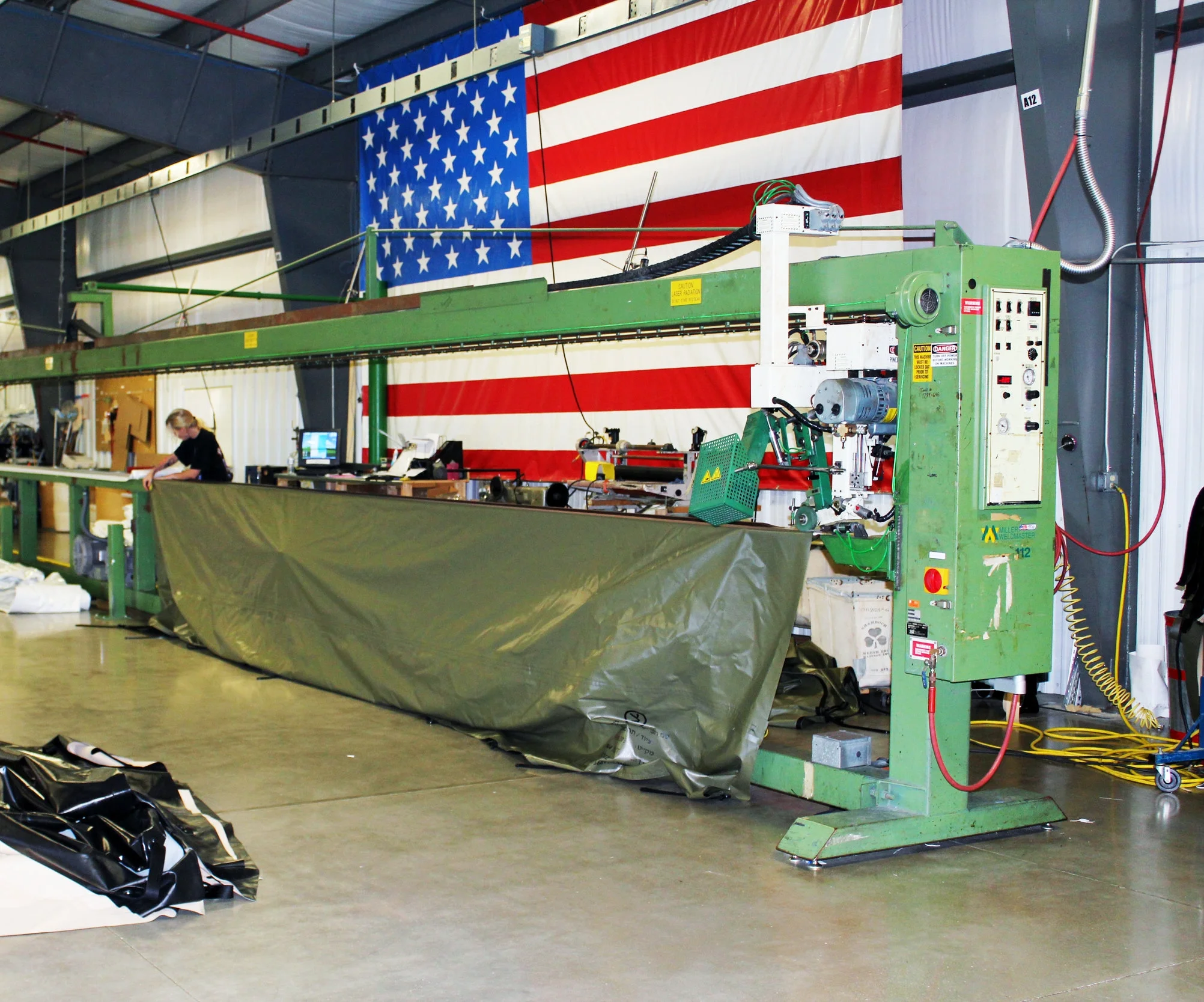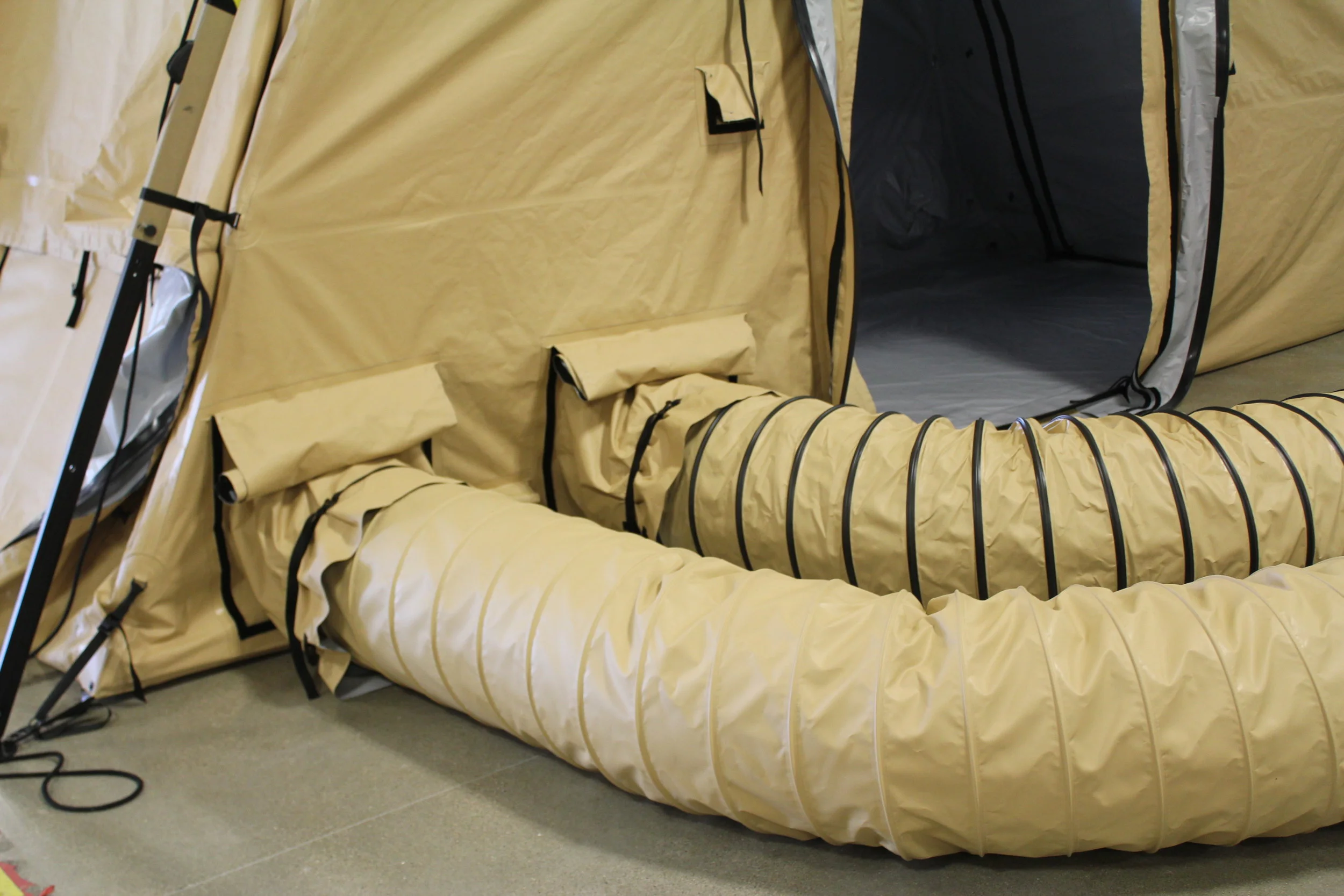Joint Enterprise – Research Development Acquisition Program (JE-RDAP)
Individual Protective Equipment - Collective Protection - Integration of
CBRNE Defense Systems/Capabilities
Company Info:
Celina Tent, Inc. dba CELINA
5373 State Route 29
Celina, Ohio 45822-9210
Phone: 419-586-3610
Fax: 419-584-0949
Email: JE-RDAP@CelinaTent.com
JE-RDAP Contract No.: W911QY-18-D-0033
CAGE Code:
1U9Z5
DUNS Number: 962650016
Small Business
DLA JCP#:
0046943
Award Summary
Celina Tent, Inc. (W911QY-18-D-0033) will share in an $8.276 billion hybrid (cost, cost-plus-fixed-fee, cost-plus-incentive-fee, firm-fixed-price, fixed-price-incentive, and fixed-price-redetermination) contract for the Joint Enterprise Research, Development, Acquisition and Production and Procurement (JE-RDAP) program to support research and development of chemical, biological, radiological, nuclear, and high-yield explosives (CBRNE) defense systems, capabilities, equipment, supplies and material. U.S. Army Contracting Command, Natick, Massachusetts, is the contracting activity. Celina has been developing and fabricating products in this market for several years, focusing primarily on engineered textile and advanced material solutions.
Celina is interested in Teaming, Partnering
and Subcontracting Opportunities.
Mission Statement
Our mission is to develop and fabricate innovative and affordable products for large-scale collective protection and the decontamination of equipment and personnel in order to mitigate the threat of CBRNE contingencies.
Diversification
To ensure the long-term survivability of the company, Celina places heavy emphasis on diversification. Of Celina’s total sales, approximately 60% are transacted through the military while the other 40% are commercial. This decreases risk within the company while promoting consistent growth.
Ownership
Established in 1996, Celina Tent, Inc. is an American-owned, family-owned, privately held small business. Owners are active in all day-to-day operations.
What We Do
Industrial Textile Fabrication
Textile-based fabrication has been Celina’s core competency since beginning manufacturing COTS shelters in 1998. Since then, Celina has grown to a 190,000 ft. sq. manufacturing and warehousing campus in their Celina, Ohio location alone. Here, Celina manufactures products such as Decontamination Shelters, Collective Protection Shelters, Chem-Bio Ducting, Camouflage Netting Systems, Tactical Military Shelters, Humanitarian Shelters, Tarpaulin, Tactical Vehicular Parts, Dry Storage Shelters, and much more.
Metal Fabrication
To gain the ability to manufacture shelter frames and other various metal components in-house, Celina has made investments into metal fabrication machinery. This machinery enables Celina to fully design, manufacture, and assemble shelter frames on campus, with minimal supplies from subcontractors. In addition to increased monitoring of the quality of our frame components, this has led to an elevated level of supply chain optimization within our company.
Surge Capacity/Scalable Production
The Celina campus has the ability to surge in terms of production, sourcing, consolidation and/or kitting within days or hours. If required, the 100,000 square foot distribution center is located on build-ready land and could be increased to 585,000 square feet within months.
Celina’s campus is located within the heart of an automotive manufacturing region, allowing quick and easy access to metalworking and industrial services. In addition to the desirable manufacturing location, there exists a base of industrial workers in the region that can be accessed in the event that surge manufacturing is necessary.
Research and Development/Engineering
Celina has a team of specialized engineers that are responsible for the development of new and innovative products. These engineers tend to take unique, “outside of the box” approaches to solving problems, enabling them to overcome the most difficult of tasks.
To ensure the quality of products, Celina takes great measures to test its products. Celina utilizes an outdoor proving ground for testing shelters against the harshest weather conditions. In addition, Celina’s on-campus test center can perform thermal efficiency tests, flame tests, tensile strength tests, tear strength tests, and much more.
Collective Protection
Through years of manufacturing Col-Pro shelters for prime contractors, Celina has gained an abundant amount of knowledge in fabricating collectively protected shelters. Celina’s single skin and secondary liner designs were created to support a positive air pressure bio-secure system (complete with air locks), letting system users keep a close eye and tight control on any possible contaminates as personnel move in and out of the facility. The entry points to bio-secure areas have specially designed seals to accommodate the increased attention to contaminates.
Decontamination Solutions
Celina has spent years producing decontamination shelters for prime contractors, perfecting the fabrication process and becoming educated in the technical requirements. Created to exacting standards, various decontamination lines were designed to allow thorough cleansing of both people and equipment, including individuals who are non-responsive. These lines have been approved for treatment of chemical, biological, radiological, nuclear, and high yield explosive contaminates.
Sourcing/Supply Chain
Celina has a team of full time personnel skilled in supply chain management, who specialize in sourcing mil-spec components at optimal prices, managing vendors, managing inventories and warehouses, and managing logistics. Even after years of experience, Celina still searches for innovative ways to optimize its supply chain and cut costs. Celina’s Quality Manual requires flow down of contract requirements to our suppliers through Purchase Orders. The contractual flow down may include FAR, DFARS, Regulatory or Berry Amendment Compliance.
Our Products
Dynamic Shelter Solutions
Dynamic Shelter Solutions is a design created by Celina that offers unlimited footprint options depending on the end users need or dimension requirements. Its superior packability allows for decreased transportation costs. The wind load, snow load, dead load, lateral load, and extreme temperature capabilities far exceed typical mil-spec requirements. Because of its ability to be assembled with minimum personnel in a short amount of time, the installation process is simplistic. Footprint dimensions of the shelter can be manufactured as small or large as the end user deems necessary, within reason.
CBRNE Ducting and Hose
Celina has developed a new CBRNE ventilation duct that is far cheaper and more durable than what’s currently procured through the DoD. Celina’s Single Layer duct is manufactured from a Mil-Spec CBRNE material that’s heat welded to create an air-tight seal. Wear strips can also be welded to the exterior of the duct to increase its level of durability.
Controlled Dry Storage Systems
Celina can manufacture Controlled Dry Storage Systems for any type of aircraft and helicopter. Systems are manufactured for various assets such as cars, tanks, artillery, engines and accessories from urethane, PVC, other membrane materials that are adjustable to the climatic conditions where the equipment will be stored. By absorbing and expelling excess water vapors through a regulated cycle of operations, the dehumidifier maintains air inside the cover at a corrosion-prevention level.
Infrashield Fabric Coatings
InfraShield is a fabric coating used to repel ultraviolet light and reduce the amount penetrating the interior of a fabric structure. By reducing the amount of ambient IR radiation that is absorbed by wall and insulating panels, tents coated with InfraShield use less energy for climate control and greatly reduce the amount of material break down caused by IR exposure.
InfraShield uses its unique chemical makeup to reflect IR radiation extending below visible light. The human eye sees wavelengths from 380 nm (nanometers) to 780 nm; by comparison, IR light ranges from 700 nm to 1mm (1,000,000 nm) wavelengths - around half of the sun’s thermal-spectrum radiation output. By reducing absorption, the process of heating is curtailed in its early stages, which makes cooling procedures less of an issue. Maintaining proper environmental attributes is simpler when there aren’t forces working toward disparate goals; removing a major source of heating can greatly improve tasks in this area.
All testing utilizes our Thermal Resistance Assessment Chamber, developed by our in-house engineering team. Treated layers are assessed using thermal imaging and ambient temperature recording devices, amassing information on thermal loss between layers and comparing results to those of uncoated materials. Tests use multiple layers of treated materials, often using a different material with InfraShield coating for each layer, to find the best combination for maximum protection. All materials used at Celina are compliant with the Berry Amendment, including those we test using the InfraShield coating.
Thermacore – Thermal Efficient Insulation Materials
ThermaCore’s tri-layer technology utilizes the inherent properties of each material to its maximum potential. We place a high importance on studying the expansion of the thermal bridge, the decrease of barrier strength due to adhesion processes, and the reflective properties of several types of thermoplastic polymer resins. All materials sourced for our product trials are Berry Amendment compliant, as it applies to restrictions for fabrics, fibers, and yarns.
All testing utilizes our proprietary Thermal Resistance Assessment Chamber. Insulated layers are assessed using thermal imaging and ambient temperature recording devices, amassing information on thermal loss through stitch lines and evaluating the properties of the material’s thermal bridge. Results show reduction of expended energy used to maintain proper interior climate down 45% from comparable standard material. All material used in Thermacore insulation is rigorously tested to meet tent and fabric structure flame specs. By combining the power of semi-crystalline polymers and nitrogen based compounds, which are used for UV reflective properties and resistance to UV penetration and break down, the interior of the protected structure provides the maximum amount of ultraviolet defense. Material strength has been unaffected by ultraviolet light in tests of up to continuous 200 hours of exposure. The trimer chemical blend used on the interior of ThermaCore liners exhibits exceptional flame-resistant properties. As an added effect, insulation composition also exhibits sound reduction properties, frequency absorption peaking around 2 kHz.
Concealment Technologies
Celina is capable of manufacturing camouflage netting systems, composed of any camouflage pattern required. If desired, Celina can apply digital images taken by camera, drone, or satellite directly to the camouflage netting system to ensure optimum visual concealment. This camouflage technology can also be applied to military shelters when additional concealment is a necessity.
For more information in regards to JE-RDAP Teaming, Partnering & Subcontracting please email the Celina team
at JE-RDAP@CelinaTent.com













